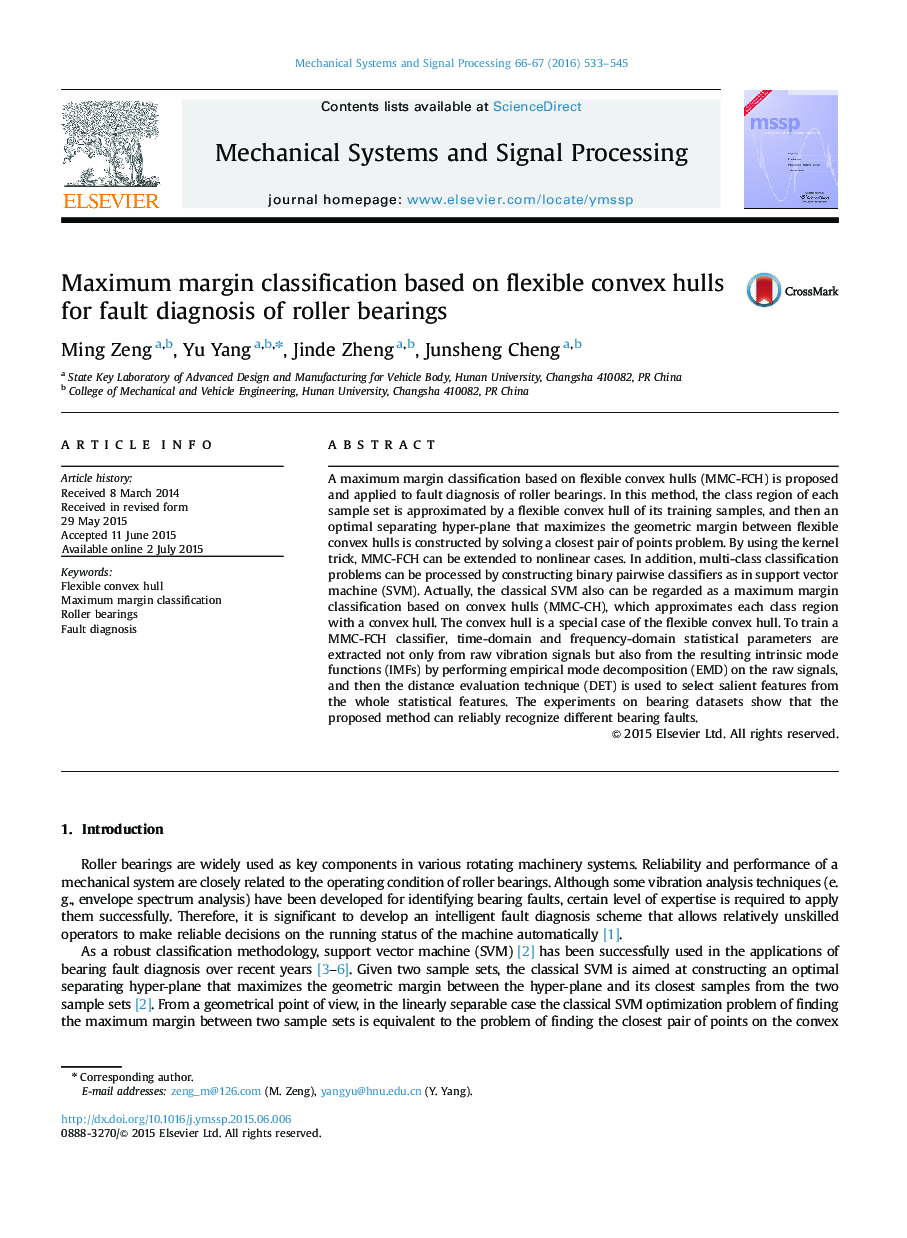| Article ID | Journal | Published Year | Pages | File Type |
|---|---|---|---|---|
| 559147 | Mechanical Systems and Signal Processing | 2016 | 13 Pages |
•A flexible convex hull is defined in this work for the class region approximation.•MMC-FCH is proposed for fault diagnosis of roller bearings.•Time and frequency domain parameters are extracted from signals and their IMFs.•Distance evaluation technique is used to select salient features.•Experimental results show that MMC-FCH works better than MMC-CH.
A maximum margin classification based on flexible convex hulls (MMC-FCH) is proposed and applied to fault diagnosis of roller bearings. In this method, the class region of each sample set is approximated by a flexible convex hull of its training samples, and then an optimal separating hyper-plane that maximizes the geometric margin between flexible convex hulls is constructed by solving a closest pair of points problem. By using the kernel trick, MMC-FCH can be extended to nonlinear cases. In addition, multi-class classification problems can be processed by constructing binary pairwise classifiers as in support vector machine (SVM). Actually, the classical SVM also can be regarded as a maximum margin classification based on convex hulls (MMC-CH), which approximates each class region with a convex hull. The convex hull is a special case of the flexible convex hull. To train a MMC-FCH classifier, time-domain and frequency-domain statistical parameters are extracted not only from raw vibration signals but also from the resulting intrinsic mode functions (IMFs) by performing empirical mode decomposition (EMD) on the raw signals, and then the distance evaluation technique (DET) is used to select salient features from the whole statistical features. The experiments on bearing datasets show that the proposed method can reliably recognize different bearing faults.
